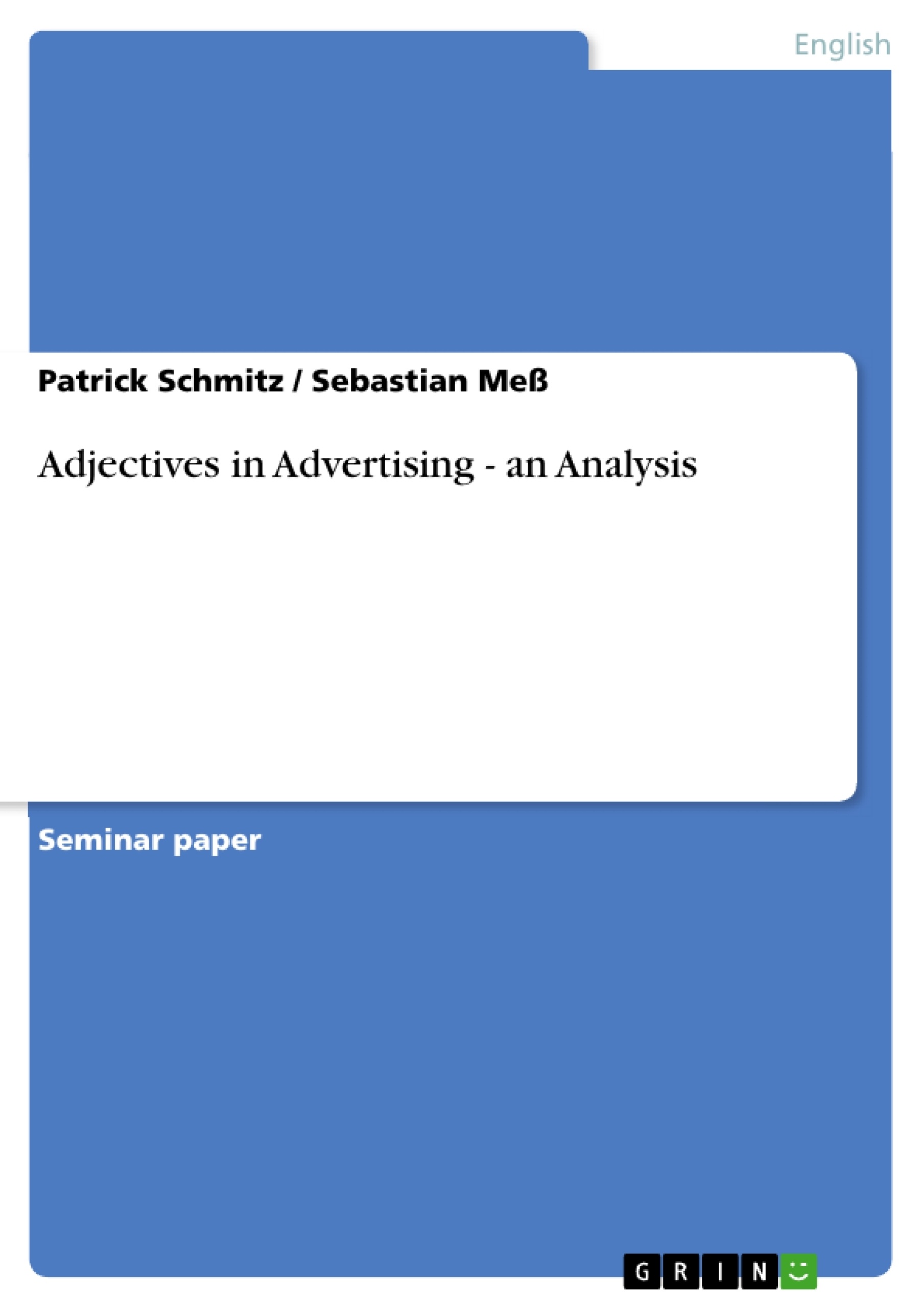This term-paper is – among other things - meant to present the role adjectives play in the whole
process of advertising. With a restriction to written advertisement, the following questions are to be answered: Can adjectives accomplish to attract a consumer? Can they initiate interest, desire or the action of buying the product?
Inhaltsverzeichnis (Table of Contents)
- Introduction
- Adjectives: characteristics, functions and occurrence in advertising
- Adjectives in different fields of advertising
- Adjectives in cosmetic and beauty treatment advertising
- Conclusion
Zielsetzung und Themenschwerpunkte (Objectives and Key Themes)
This paper aims to analyze the role of adjectives in written advertising, focusing on their ability to attract consumers, initiate interest and desire, and ultimately induce purchase. The study will examine the prevalence and function of adjectives in different advertising contexts, with a special focus on cosmetic and beauty care products.
- The role of adjectives in attracting and persuading consumers
- The use of adjectives in various advertising fields
- The application of adjectives in cosmetic and beauty care advertising
- The linguistic functions and characteristics of adjectives in advertising
- The analysis of a corpus of magazine advertisements
Zusammenfassung der Kapitel (Chapter Summaries)
- Introduction: This chapter introduces the significance and omnipresence of advertising in contemporary society, highlighting its evolution across various media platforms. It also discusses the general purpose of advertising, particularly focusing on the AIDA model, which aims to attract, interest, desire, and induce action from consumers.
- Adjectives: characteristics, functions and occurrence in advertising: This chapter defines the function and characteristics of adjectives, emphasizing their use in advertising for describing and evaluating products or services. It explores the distinction between approbatory and disapprobatory adjectives and their respective impact on consumer perception.
- Adjectives in different fields of advertising: This chapter delves into the specific application of adjectives in various advertising fields, providing examples and exploring their role in shaping consumer perception across different product categories.
- Adjectives in cosmetic and beauty treatment advertising: This chapter focuses on the use of adjectives in cosmetic and beauty care advertising, examining their position within phrases and sentences, their sub-grouping within the larger product category, and their occurrence in compound constructions. Exemplary advertisements are used to illustrate these concepts.
Schlüsselwörter (Keywords)
This paper primarily explores the use of adjectives in advertising, focusing on their role in persuasion, consumer perception, and product evaluation. It analyzes various types of adjectives, their occurrences in different advertising fields, and their specific application in cosmetic and beauty care advertisements. The research draws on both theoretical frameworks and empirical analysis of a corpus of magazine advertisements.
- Arbeit zitieren
- Patrick Schmitz (Autor:in), Sebastian Meß (Autor:in), 2008, Adjectives in Advertising - an Analysis, München, GRIN Verlag, https://www.grin.com/document/190611



